Civil Service staff numbers at the Spending Review
The Civil Service gets smaller, but is not yet small enough for the government.
The Civil Service has continued to shrink in the last quarter, but remains 12,490 away from the 2015 total estimated in the Civil Service Reform plan. Emily Andrews looks to the recent Spending Review for signs of what’s in store for the Civil Service workforce.
There are 392,900 civil servants (FTE), down 4,990 from the previous quarter. 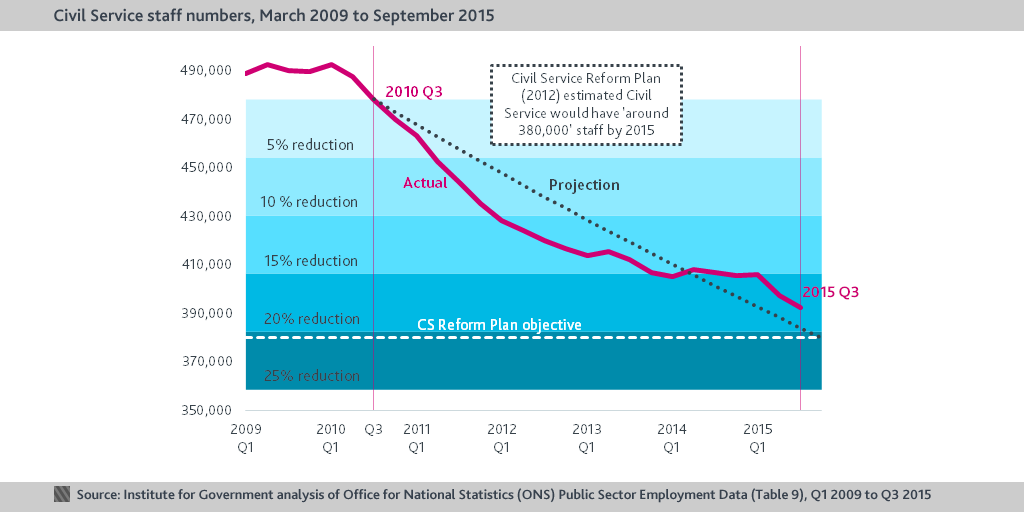
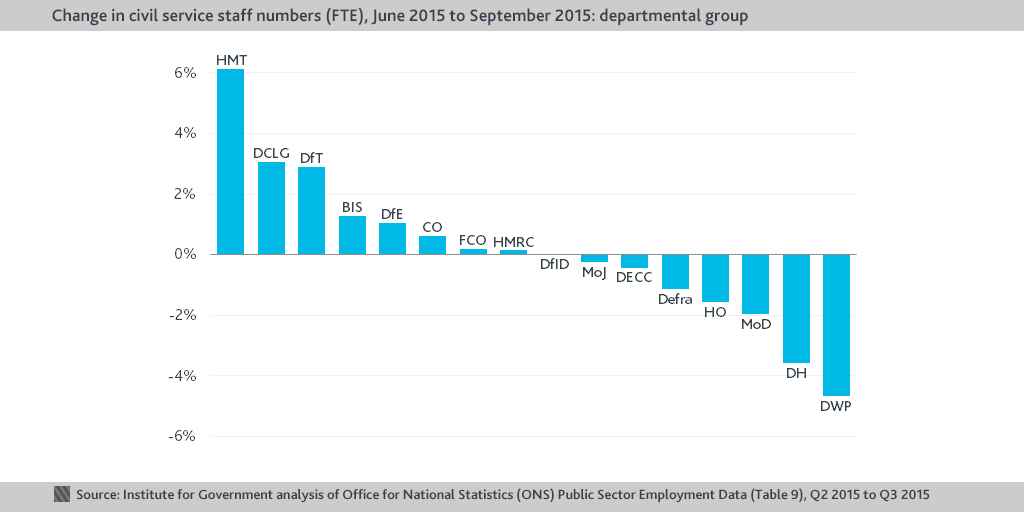
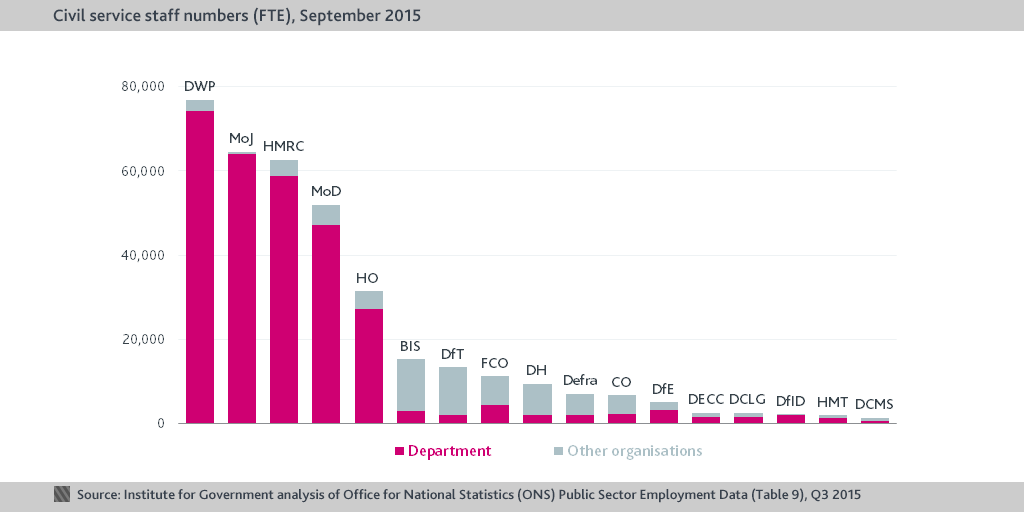
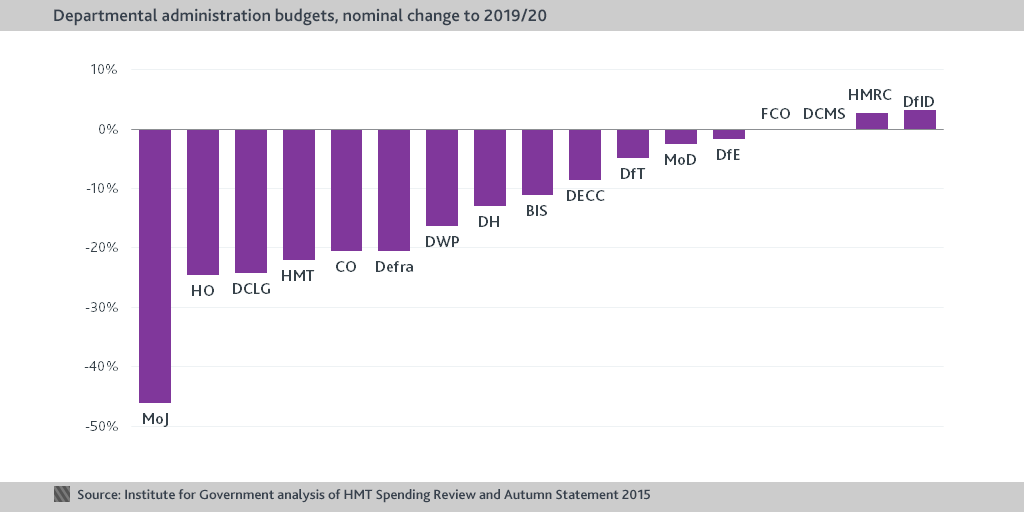
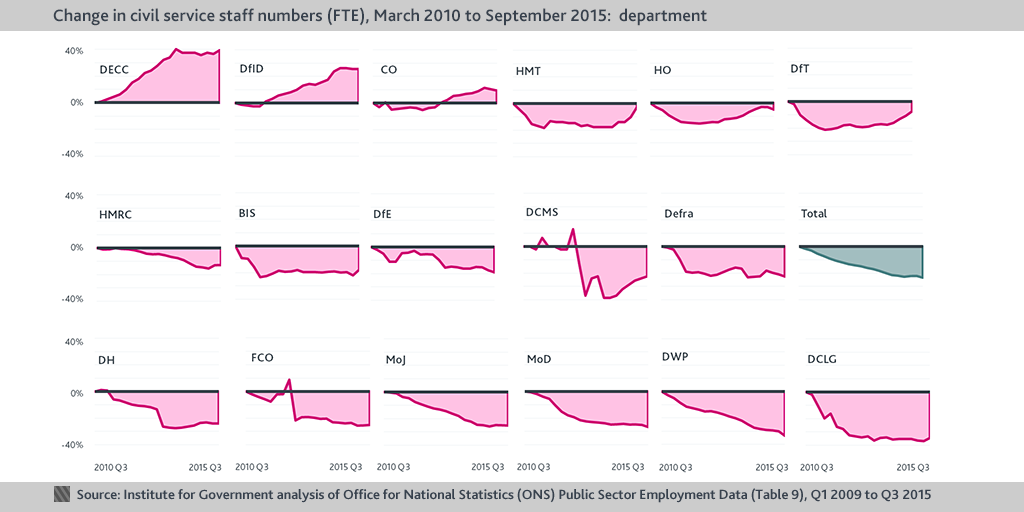
Abbreviations for government departments can be found here.
- Topic
- Civil service
- Administration
- Cameron-Clegg coalition government
- Publisher
- Institute for Government